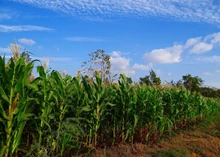
India's agricultural sector, a crucial pillar of the economy, is currently grappling with the repercussions of irregular rainfall patterns nationwide. These weather anomalies, combined with the looming threat of El Nino, have raised concerns about agricultural production and food inflation in the country.
Ashok Gulati, a distinguished professor at ICRIER (Indian Council for Research on International Economic Relations), has emphasized the negative impact of erratic rainfall distribution on agriculture. He highlighted the worrisome scenario created by the concentration of excessive rainfall in certain regions and deficiencies in others.
The unpredictability of these weather patterns poses challenges to agricultural production, and the extent of the damage is yet to be determined. The months of July and August are crucial in determining the outcome for the agricultural sector.
Concerns have arisen due to excessive rainfall in key food grain growing areas such as Punjab, Haryana, and western Uttar Pradesh, while 15 subdivisions known for rice cultivation, including Andhra Pradesh, Telangana, Karnataka, and West Bengal, are currently experiencing deficient rains.
Regarding inflation, Gulati indicates that there may be some control over wheat price inflation. He also notes that there are fewer buyers in the open market for rice, suggesting that cereal price inflation should not be a major concern in the coming months. However, Gulati expresses worries about vegetable prices and certain pulses due to the combination of climate issues, floods, and droughts. He specifically highlights the potential for price spikes in tur due to these factors.
Interestingly, Gulati draws attention to a less-discussed aspect, namely milk inflation, which he considers to be a significant concern. He points out that milk has the highest weight among the 299 commodities in the CPI basket. It has been contributing the most to CPI inflation until the previous month, yet it has received little attention in terms of finding a solution to this issue.











